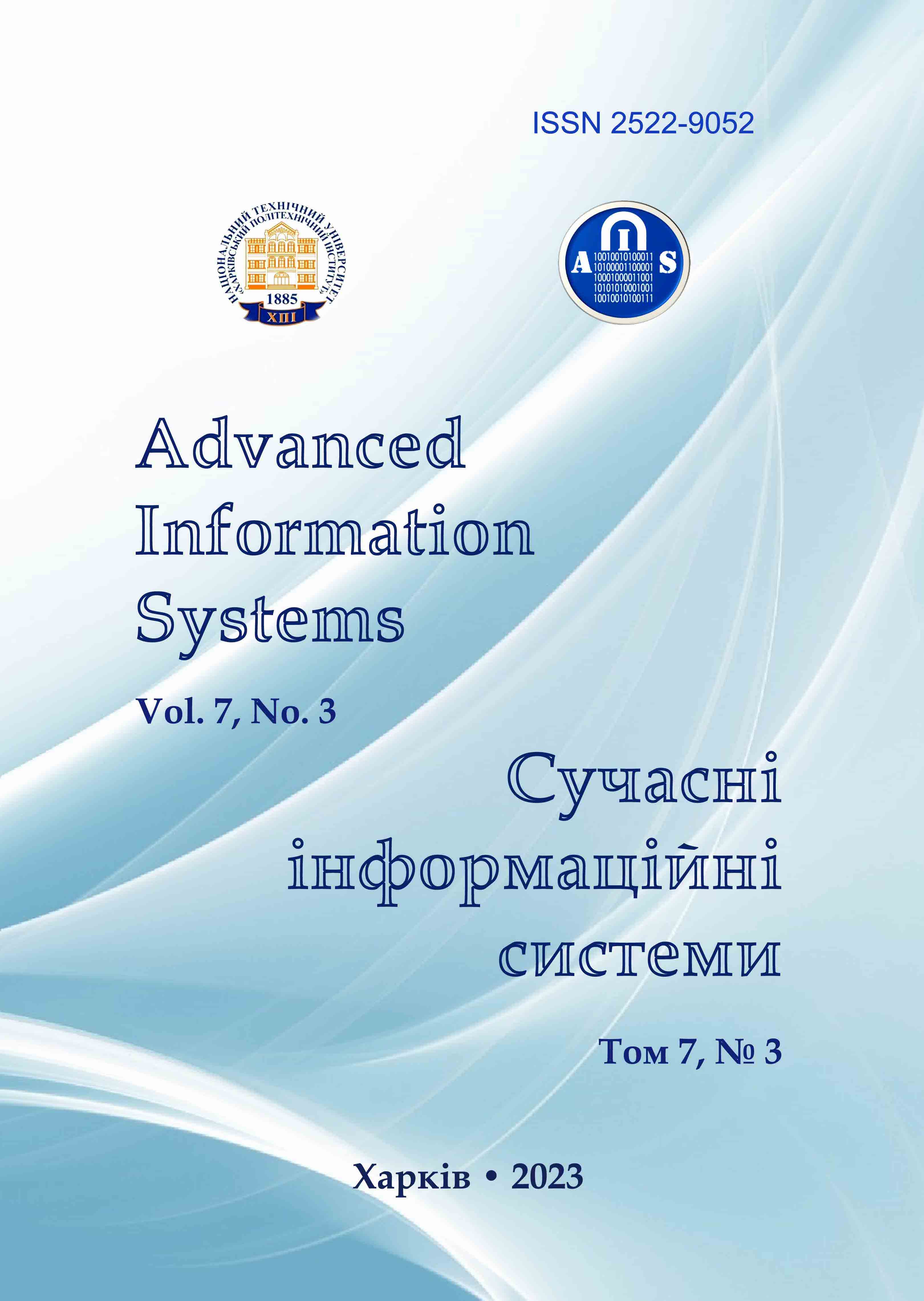DIAGNOSIS OF SYSTEMS UNDER CONDITIONS OF SMALL INITIAL DATA SAMPLING
Main Article Content
Abstract
Object of the study is to assess systems state in conditions of a small sample of initial data. Relevance of the problem is as follows. The functioning of a significant number of real objects takes place under conditions of poorly predicted changes in the values of environmental factors affecting system efficiency. The resulting heterogeneity of the results of objects experimental study and the environment of their functioning leads to reduction in sample size. At the same time, the standard requirements regarding the correspondence of the number of experiments and the number of coefficients of regression equation determining system state are not met. Purpose of the study is to develop methods for assessing systems state operating in a changing environment, in conditions of small sample of initial data. Tasks to be solved to achieve the goal: the first is the equivalent transformation of the set of observed initial data forming a passive experiment in aggregate into an active experiment, which corresponds to an orthogonal plan; the second is the construction of a truncated orthogonal representative sub-plan of the general orthogonal plan obtained as a result of solving the first problem. Research methods: statistical methods of experimental data processing, regression analysis, method for solving a triaxial boolean assignment problem. The results obtained: orthogonal representative subplan of the complete factorial experiment being formed makes it possible to calculate a truncated regression equation containing all the influencing factors and their interactions. Analysis of the coefficients of this equation by known methods makes it possible to cut off its insignificant elements.
Article Details
References
Kwon, Baik (eds.) (2004), Systems modeling and simulation: theory and applications, third Asian Simulation Conf., AsiaSim 2004, Jeju Island, Korea, October 4–6, Revised Selected Papers, ISBN 3-540-24477-8, doi: https://doi.org/10.1007/b10561.
Derek W., Bunn and Erik R., Larsen (1997), Systems modelling for energy policy, Wiley, 250 p., ISBN 0-471-95794-1, available at: https://www.wiley.com/en-us/Systems+Modelling+for+Energy+Policy-p-9780471957942.
Hans-Jörg, Kreowski, Ugo, Montanari, Fernando, Orejas, Grzegorz, Rozenberg, and Gabriele, Taentzer (eds.) (2005), Formal methods in software and systems modeling, Springer, ISBN 3-540-24936-2, doi: https://doi.org/10.1007/b106390.
Jiming, Liu, Xiaolong, Jin and Kwok Ching, Tsui (2005), Autonomy oriented computing: from problem solving to complex systems modeling, Springer, doi: https://doi.org/10.1007/b101185.
Michael, Pidd (2004), Systems Modelling: Theory and Practice, John Wiley & Sons, 240 p., ISBN 0-470-86732-9, available at: https://www.wiley.com/en-us/Systems+Modelling:+Theory+and+Practice-p-9780470867310.
Václav, Pinkava (1988), Introduction to Logic for Systems Modelling, Taylor & Francis, 1988, 132 p., ISBN 0-85626-431-8, available at: https://www.biblio.com/book/introduction-logic-systems-modeling-pinkava-vaclav/d/1094804495.
Draper, N. R. and Smith, H. (1998), Applied Regression Analysis, ISBN: 978-0-471-17082-2, 736 p., available at: http://www.pzs.dstu.dp.ua/DataMining/mls/bibl/Applied_Regression_Analysis.pdf.
Strutz, T. (2013), Data Fitting and Uncertainty, A practical introduction to weighted least squares and beyond, Vieweg+Teubner, ISBN 978-3-8348-1022-9, available at: https://link.springer.com/book/9783658114558.
Stulp, Freek, and Olivier, Sigaud (2015), “Many Regression Algorithms, One Unified Model: A Review”, Neural Networks, vol. 69, Sept. 2015, pp. 60–79, doi: https://doi.org/10.1016/j.neunet.2015.05.005.
Malakooti, B. (2013), Operations and Production Systems with Multiple Objectives, John Wiley & Sons, 1114 p., ISBN: 978-0-470-03732-4, available at: https://www.amazon.com/Operations-Production-Systems-Multiple-Objectives/dp/0470037326.
Chicco, Davide, Warrens, Matthijs J. and Jurman, Giuseppe (2021), “The coefficient of determination R-squared is more informative than SMAPE, MAE, MAPE, MSE and RMSE in regression analysis evaluation”, PeerJ Computer Science, 7 (e623): e623, doi: https://doi.org/10.7717/peerj-cs.623.
Avriel, Mordecai (2013), Nonlinear Programming: Analysis and Methods, Dover Publishing, 512 p., ISBN 0-486-43227-0, available at: https://books.google.com.ua/books/about/Nonlinear_Programming.html?id=Gq1InQAACAAJ&redir_esc=y.
Bonnans, J. Frédéric, Gilbert, J. Charles, Lemaréchal, Claude and Sagastizábal, Claudia A. (2016), Numerical optimization: Theoretical and practical aspects, Berlin: Springer-Verlag, doi: https://doi.org/10.1007/978-3-540-35447-5.
Luenberger, David G. and Ye, Yinyu (2008), Linear and nonlinear programming, International Series in Operations Research & Management Science, Vol. 228 (Fourth Edition), New York: Springer, ISBN 978-0-387-74502-2, doi: https://doi.org/10.1007/978-3-319-18842-3.
